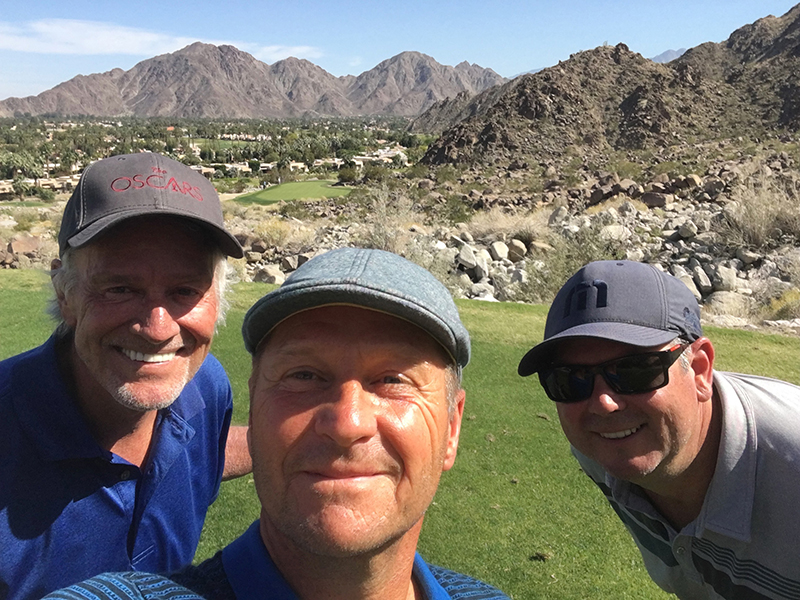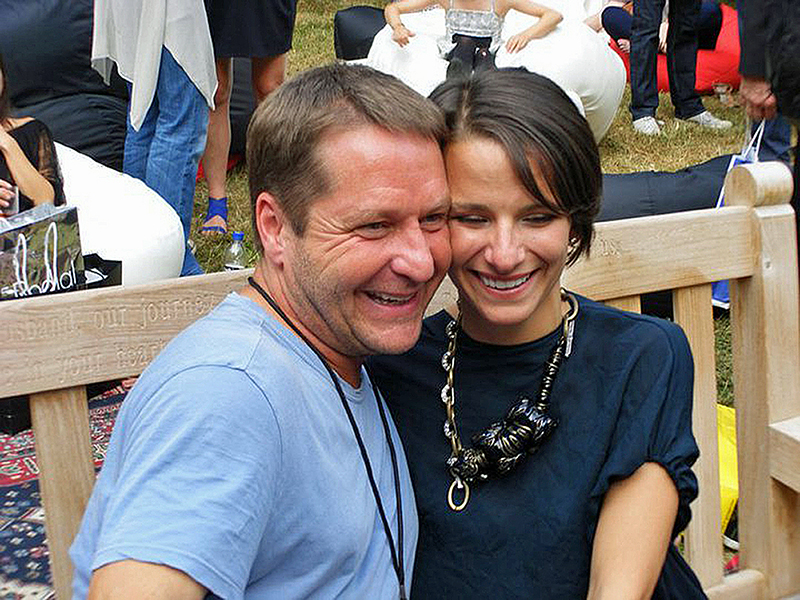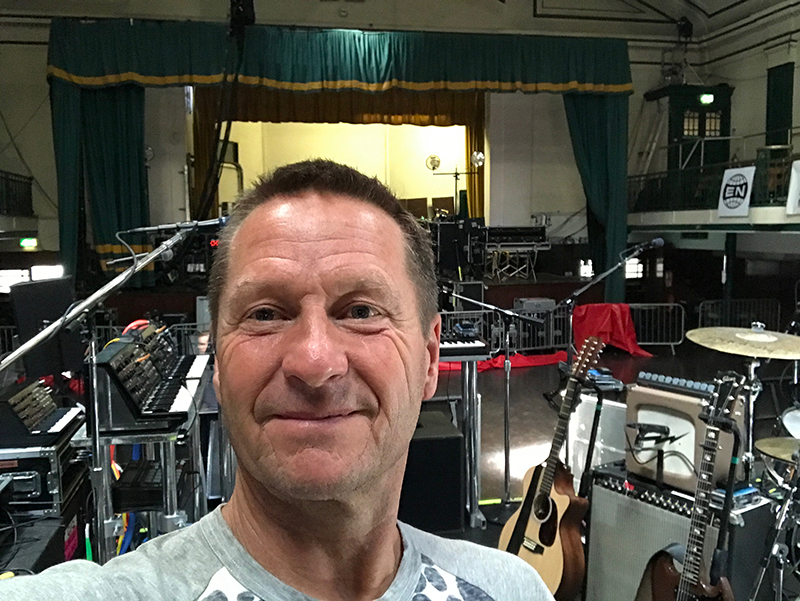Mickey Curbishley has had a long and distinguished career in the touring music industry. From his start selling shirts at concert venues, to his recently being named president of Solotech’s U.S. Rental Division, Curbishley has built his reputation on hard work, a deep knowledge of the touring industry, and the numerous close music and business relationships that he has built over the years while on the road and in the industry’s biggest production shops.

A New Chapter
At the beginning of June 2018, Curbishley embarked on the new chapter in his storied career by joining Solotech. In his new role, he will be responsible for Solotech’s Rental Division for touring, special events, and corporate market segments in the U.S. He will also oversee Solotech’s operations in Las Vegas, Nashville, Chicago (DeKalb, IL) and the opening of the Los Angeles office. “I am excited to have the opportunity to be part of Solotech’s growth plans in the U.S., and I look forward to continuing to work with Solotech’s stellar team. I have a lot of longtime friends and colleagues at Solotech. It is going to be great getting to work with them again,” says Curbishley.
He is an ideal choice for the job, as over the course of his career, Curbishley has become an expert in supporting the production needs of world-renowned artists. “This is something that I’ve done a couple of times now over the last 20 years, so I feel very comfortable in the role,” he says. “It is great to be able to help build another global concert touring group, although Solotech is already very well established and they’re doing fantastic. You look at what they’re doing right now — the list of artists and tours they are supporting — they’re a very serious player.”
Curbishley has some well-measured goals that he wants to accomplish with Solotech in the U.S. market. “We are going to pace ourselves,” he says. “We really are focused on continuing to service our clients at the highest level. That is the primary consideration with every decision we will be making — “How does it support our clients and the industry?” As for the announced plan to open a location in Los Angeles, Curbishley notes, “Los Angeles is an obvious place for us to be located, and we’re just going to take our time finding the right people. Everyone’s got the same equipment, everyone’s got moving lights, and trusses, but it’s all about the people. That’s cliché, and everybody says that, but it really is true. I am very confident we will find the right people.”

A Wild Ride
As he starts this new chapter, PLSN spoke with Curbishley about his career path, some of his key milestones, and what he’s learned over the course of his career in the entertainment industry. Beginning his career in the mid 80’s, he toured with some major acts: AC/DC, Elton John, Frank Sinatra, Judas Priest, Eric Clapton, The Who, to name just a few. In 1994, he left the road and was part of a team that acquired
Light and Sound Design (LSD), where he would play a strategic role in LSD’s international expansion; growing it into one of the most successful concert touring production companies in the world. Following PRG’s acquisition of LSD in 1998, he filled leadership roles for PRG’s concert touring division for over 18 years, eventually taking on the role of president and CEO of PRG Music Group until 2016. Just prior to joining Solotech, he was the senior vice president of touring at Tait (Lititz, PA). “The year that I spent at Tait was probably one of the most intense, informative periods of my life,” Curbishley says. “I learned so much being surrounded by the smartest group of guys that I’ve ever met.”
The Early Years
At age 16, when Curbishley decided to leave school, his dad required one thing of him. “He said to me, ‘If you’re going to leave school, you need to go to work.’ Because I didn’t really have any qualifications, I got a job in a shoe shop in Central London, which lasted exactly four days, and then I was fired. I had a friend who was selling T-shirts at a Desmond Dekker show at the Brixton Academy, so I went to help him. When some locals broke their way in to steal the box office receipts, it made the local news, and my dad came down and pulled me out of there. He said to me ‘If you’re going to do this, you’re going to do it properly.’ He introduced me to the owner of Brockum, which was the biggest T-shirt company in the rock ‘n’ roll industry at the time.”
Curbishley got a job working on the merchandise team for AC/DC’s For Those About to Rock tour. “So, I was 16 years old on my first concert tour with AC/DC,” recalls Curbishley. “You can imagine what that was like. Oh my God, I’ve just come from school, and am now in this insane environment. I fell in love with it. On that tour, I met the lighting guys and loved what they were doing; they were just the coolest guys I’d ever seen. They were the first in and the last out. I ended up meeting Steve Arch and some of these other really iconic lighting guys. From there, I got a job at Tasco, cutting gel in the backroom. I was probably 17 then. The first tour I did as a lighting guy was Elton John. I got sent down to help with the load-in and found they were one guy short. I became the fourth man on the lighting crew on Elton John’s tour.”

Curbishley continued touring with everybody from Frank Sinatra to Judas Priest. “It got to the point where we would do a Judas Priest tour for eight months, and to get over it, we would go and work for the TV show, Antique Roadshow, for two weeks,” he explains. “We would just go sit in the car park lighting vases and chairs until we stopped shaking. Then we’d find another big rock band and go out on the road again. Touring in the ‘80s was insane. You were focusing thousands of PAR cans everyday by hand for those hair band tours. It was exhausting, but it was the most fun I think I’ve ever had. You just can’t imagine what it was like to run with a band like Judas Priest in those days. The most amazing insanity I think I’ve ever been part of. And those are friendships and relationships that last a lifetime.”
“I Did It My Way”
Touring with one of his childhood idols was not quite as exhausting. “As a kid, I was a big Frank Sinatra fan; I loved his music and was really excited to do a couple of his tours, but one tour stands out. It was, by far, the easiest show I’ve ever done. It was a 60-foot square box truss with eight followspots on it. That was it; the whole lighting system. It was eight followspots that were on Frank constantly; everybody else just in the dark. The orchestra was lit by the lights on their music stands. We made the lighting rig just slightly bigger than the stage, so we could drop the lighting rig around the orchestra after the show. We would be loaded out and gone before they’d finished packing away their instruments. The whole tour was sponsored by Moët & Chandon, so it was six weeks on champagne. To go from Judas Priest, with 1,000 PAR cans, to eight followspots and listening to Frank Sinatra every night, was just great. That was a legendary tour for me.”

A Turning Point
While working in 1990 as a touring lighting technician, there was a pivotal point that would really change the course of Curbishley’s life. He was 25 years old and the lighting guy on Eric Clapton’s Journeyman world tour. After playing Alpine Valley in Wisconsin, Stevie Ray Vaughan, who was the support act for the night, was killed in a helicopter crash along with four other people, including Clapton’s assistant tour manager, Colin Smythe. Curbishley recalls, “The next day, we all got together as band and crew. Everyone was devastated, honestly. We’d lost our friends, and we didn’t know what to do. And Eric said to us, ‘Look, I think we should go on, I think it would be wrong for us all to just go home now. We need to carry on with the tour.’”
Curbishley was given Smythe’s job, as the assistant tour manager. “That completely changed my life and my career, because it showed me another side of the business as well,” he says. “It enabled me to do some things that I had never thought about. That took me away from being a touring lighting guy and it changed the course of my life. I worked for Eric Clapton for quite a few years. After that, the next really pivotal thing was when I decided I didn’t want to tour anymore because I was struggling to hold my home life together. That turning point was just over half my life ago. Those two things changed absolutely everything.”
Around 1994, as Curbishley was looking to get off the road, there was an opportunity to move into management at Light and Sound Design (LSD), where he had previously worked as a lighting guy. At that time, the once thriving LSD was struggling under the management of a venture capital group.
Nick Jackson and Terry Lee invited Curbishley to be a part of a group that wanted to buy the company and rebuild it. “I borrowed some money from my dad, like 18,000 pounds, and went in with them,” he explains. “We built it back up over three or four years, when we sold it to Jere Harris of Production Resource Group (PRG). I then worked at PRG for 18 years. That was another big moment for me — taking that plunge to become part of the management team of LSD.”
The time that he spent on the road as a touring lighting technician, a tour manager as well as his time in management at LSD helped Curbishley understand what it took to build a successful concert touring team. His experiences in the trenches have given him the knowledge and, more importantly, the credibility, to build and support his teams. “One of the most important things about working in touring is, it’s like anything, if you’ve never done it, it’s very difficult to get the respect of the people that are doing it on a daily basis,” Curbishley states. “It’s very difficult for someone who hasn’t loaded trucks in the pouring rain, in the slush and snow in Scandinavia in January, or someone who hasn’t loaded a truck and left his passport in the toolbox on the truck, and then been made to unload the truck and reload it again all on his own to get that passport. Until that’s happened to you, until you’ve done it, it’s very difficult to grasp.”
He continues, “It’s impossible to understand the significance of the importance of the crew guy to a production manager if you haven’t lived it. Me, now, as a salesman, I have a relationship with the production manager, and we might go for dinner, or we might go play golf; we might do the financial deal on a show, but my guys are the ones that are waking up on the bus, two bunks away from the production manager every day. And they’re the ones getting up in the morning and getting things done. That goes back to finding the right people and understanding what that means, who they are.”
Curbishley can’t imagine any other career, especially one that he would want to stay at for nearly 40 years. “To still wake up every morning and actually look forward to your day… I can’t imagine anything I could’ve chosen, anything else that would’ve kept my attention for this long. I don’t dream of doing anything else. This is it. I love what I do, and I’ve just got another new beginning now with Solotech, which is fantastic. So yeah, it’s been amazing journey. I got so lucky, I can’t believe I’m only 52 and that I still work in this business that I love.” Curbishley concludes with one career wish — going out for one more tour. “I will never do it, but I would love to do another tour. I’ve never slept as well as I used to sleep on a tour bus.”
For a profile of Curbishley’s new employer, Solotech, see Company 411, this issue, page 46.


